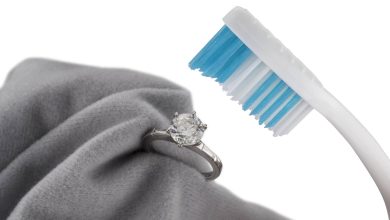HOOKAH SHISHA A NEW WAY OF SMOKING

.Hookah” is a new way to smoke tobacco in the Canada and United States. Hundreds of hookah bars, or cafes, have sprung up across the country, including dozens in Ontario’s. And most of the hookah business is centered in the university areas where they are: “Our Youth”
WHAT IS A SHISHA HOOKAH?
Hookahs or Shisha are water pipes that have been used to smoke tobacco and other substances during the last four centuries. In the Asian and Arab areas as well as in America, by the indigenous people of Chile and Peru. The design of a Shisha allows multiple hoses to lead to a single filter chamber, which implies its use in groups. We Flowers Cannabis Scarborough is here to tell you more.
Description
A hookah consists of four fundamental parts:
- The base or smoke chamber, which contains water.
- The fret or head, which contains the tobacco; the heating apparatus is placed on top of it.
- The pipe, which connects the fret to the base by means of a tube that drops into the water.
- The hose, which connects to a second tube in the pipe that does not fall into the water, but only the air from the smoke chamber. Multi-hose hookahs are particularly popular in the Eastern world, where hookah smoking is part of their culture as a social phenomenon.
Although these parts that make it up may vary in their decoration, and subtly in their shapes, they do not vary in function.
The facts about Hookah:
Tobacco smoking is not the original purpose for the invention of hookahs as there are many examples of shishas in both art and archeology before the introduction of tobacco to the Ancient World. In this pre-tobacco period, the substances most commonly smoked in Shisha were opium and hashish. Hookah’s were not intended for marijuana use.
The fruit-flavored hookah tobaccos that are now popular began in the late 1980s when Egyptian tobacco companies began experimenting with flavored tobacco. In order to sell more of their products. Shisha tobacco is often blended with dried fruit, natural extracts, and artificial flavors to produce a diverse variety of tobacco flavors. Today many modern manufacturers use glycerin as the primary sweetener in hookah tobaccos due to its moisturizing qualities and subtle sweetening properties that accentuate the various tobacco flavors.
Hookah Is Presented As Something Healthy
The ability of a hookah to produce a pleasant, non-irritating smoke has led many to believe that hookah smoking is less harmful to one’s health than cigarette smoking. But the fact is, researchers have found that the impact of hookah smoking is much the same magnitude as cigarette smoking.
An analysis published in the medical journal Pediatrics found that the concentration of cancer-causing and addictive substances. In hookahs could be equal to those found in cigarettes, with the heat involved being enough to generate carcinogenic nitrosomes, and the burning coal adding some carcinogenic hydrocarbons as well as heavy metals to the smoke.
Hookah use increases the smoker’s toxic exposure, as the typical hookah smoker spends more time smoking per episode than cigarette smokers.
Thomas Isenberg, a psychology professor at Virginia Commonwealth, University, co-authored a hookah study that found that a hookah smoking session lasting about 45 minutes produced 36 times more tartar, 15 times more carbon monoxide and 70% more nicotine than one cigarette (one cigarette lasts no more than 5 minutes, making approximately 9 cigarettes equal to a 45-minute hookah session) .
Another hookah study in the Journal of Period ontology found that hookah smokers were five times more likely than non-smokers to have signs of periodontal disease.
The researchers found that the impact of hookah smoking is largely of the same magnitude as that of cigarette smoking. The prevalence of periodontal disease was 30 percent in hookah smokers, 24 percent in cigarette smokers, and 8 percent in nonsmokers.
“The research from this study shows that the relative risk of periodontal disease was increased 5-fold in water pipe smokers and 3.8-fold in cigarette smokers compared to non-smokers,” said Kenneth A. Krebs, DMD and president of AAP. Although the smoke is filtered by water, the inhalation of toxic substances is similar to, or even greater than, that of smoking cigarettes.
“Many people are misled into believing that water filters out toxins and decreases nicotine from hookah smoking,” Krebs continued. “Water pipe smoking not only includes the same substances as cigarette smoke, such as carbon monoxide and tartar, the tobacco used for water pipe smoking contains between two and four percent nicotine compared to tobacco. One to three percent in cigarettes.”
Quoting from one of the studies mentioned, the fast-igniting charcoal used by many hookah smokers may be “the biggest danger to users,” because it produces higher levels of carbon monoxide, nitrous oxide, and other dangerous substances than charcoal. Natural and without additives. Fast-igniting charcoal is made by mixing powdered charcoal with various chemicals, such as sodium nitrate, that allow it to ignite quickly and easily. Ignition of quick burning charcoal normally results in the emission of sparks.




